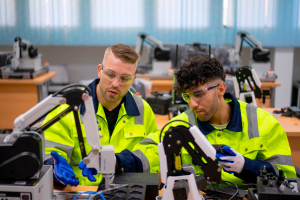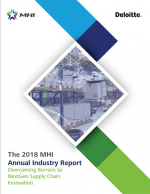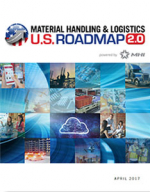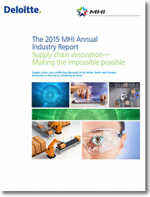Material Handling & Logistics U.S. Roadmap 2.0
The purpose of the U.S. Roadmap for Material Handling & Logistics is to help the industry determine how logistics and supply chain trends and challenges can be turned into action plans to develop needed capabilities in the U.S. between now and 2030.
The U.S. Roadmap for Material Handling & Logistics assembled a broad, open community of thought leaders with a stake in the future of material handling and logistics technologies and practices.
Its purpose is to help the industry determine how logistics and supply chain trends and challenges can be turned into action plans to develop needed capabilities in the U.S. between now and 2030.
Roadmap 2.0 is a fresh look at the staggering rate of change impacting material handling and logistics. It is a follow-on to the original Roadmap - published in January 2014 - which took a high-level look forward to 2025.
While the original Roadmap identified a baseline of key disruptors faced by current supply chain practitioners, as well as the core competencies they must develop in order to thrive in the coming decade, Roadmap 2.0 focuses on four key supply chain forces: technology, consumers, workforce and logistics infrastructure.
How was Roadmap 2.0 developed?
To develop Roadmap 2.0, input was gathered from an open community nearly 200 strategic thinkers - 70 percent of whom did not participate in the development of the original Roadmap.
They include material handling and logistics practitioners, equipment and software suppliers, academia, associations and government.
Participants sat in on one (or more) of five roundtable events held August through November 2016 in Atlanta, Georgia; Trenton, New Jersey; Ontario, California; Tucson, Arizona; and Chicago, Illinois.
After dividing into nearly 70 different discussion topic breakout sessions, attendees contributed their insights on both recent and anticipated developments in the field.
Also, they further explored the core competencies that companies will have to develop within the next decade.
A broad, open community of thought leaders - including material handling and logistics practitioners, suppliers, academia, associations and government - participated in the development of Roadmap 2.0.
What’s Related




Favorites





